Although chopped liver may not be as refined as a pâté, it's wonderfully flavorful and easy to make in a food processor. It's ready in 20 minutes, but tastes best after a short rest in the fridge.
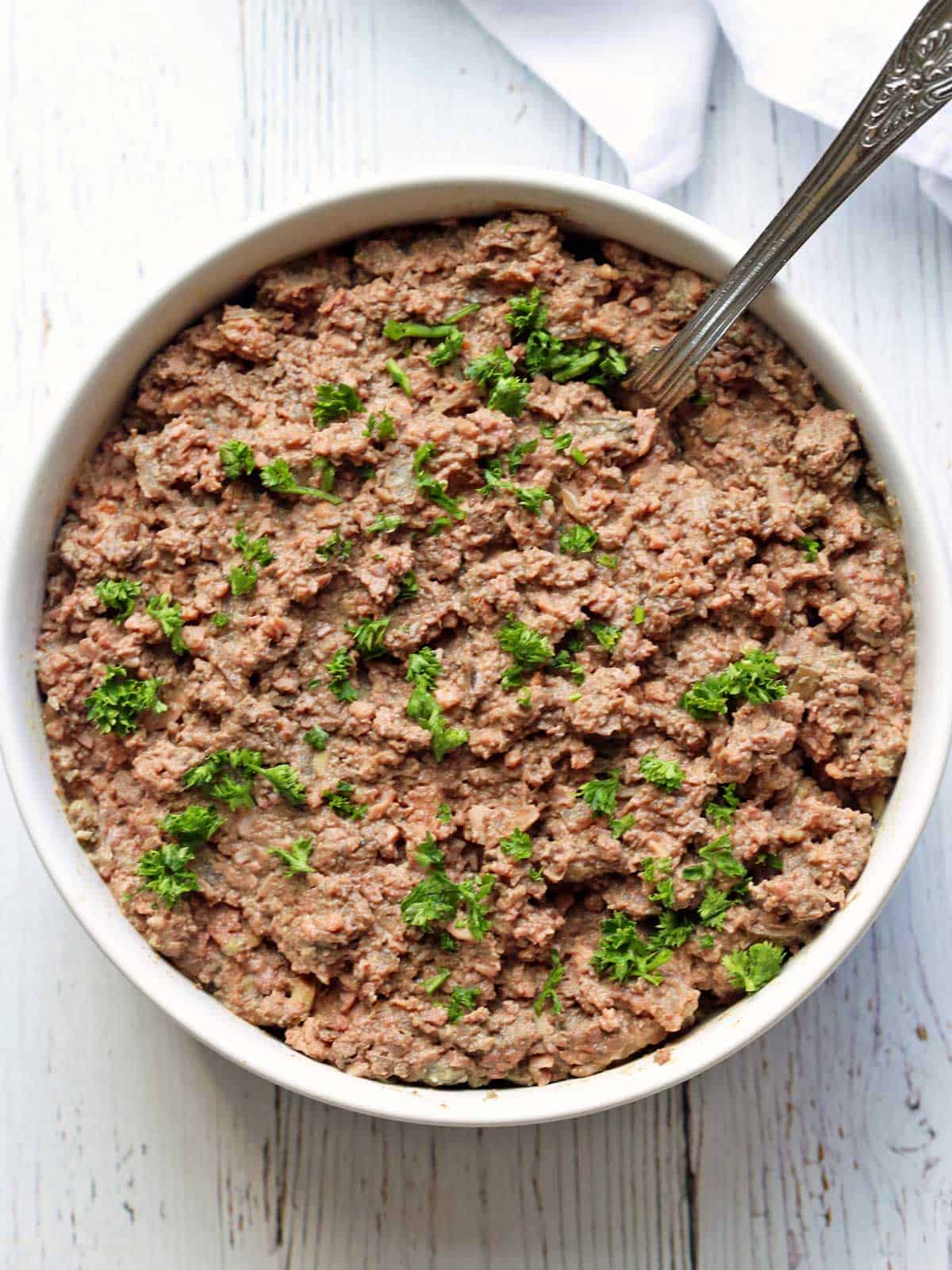
Chopped liver is the Jewish version of chicken liver pâté. It's simpler, heartier, and kosher because it doesn't contain dairy. I appreciate the delicate texture and flavor of pâté, but I also enjoy the rustic Jewish version. This is my grandmother's recipe. The only change I make is using olive oil instead of chicken fat, but please feel free to use chicken fat.
Ingredients

See the recipe card for exact measurements. Here are my comments on some of the ingredients.
- Fresh chicken livers: I usually get them at the meat counter at Whole Foods. They are also widely available in U.S. supermarkets.
- Hard-boiled eggs: These need to be hard-boiled, not medium-boiled. So, if you follow this recipe for hard-boiled eggs, leave them in hot water for 12-13 minutes.
- Extra-virgin olive oil: The traditional recipe uses chicken fat. This ensures the dish keeps Jewish kosher laws and does not mix meat and dairy. I prefer to use extra-virgin olive oil. It's delicious! However, if you prefer to use chicken fat, that's absolutely fine. If you can't find chicken fat, it might be easier to buy duck fat.
- Onion: Chop it finely. This is an important ingredient - it's responsible for the dish's bold flavor. It's used here in much larger quantities than those used in a typical pâté.
- Minced garlic: It's best to use fresh minced garlic, though sometimes I use garlic powder. Garlic is not usually included in traditional recipes, but I like the flavor it adds.
Instructions
If you use a food processor, this recipe is as easy as can be! The detailed instructions and step-by-step photos are included in the recipe card. Here's a quick overview
Cook the onions and garlic in olive oil. Transfer them to your food processor along with hard-boiled eggs.

Add more olive oil to the skillet and saute the livers. Don't overcook them!
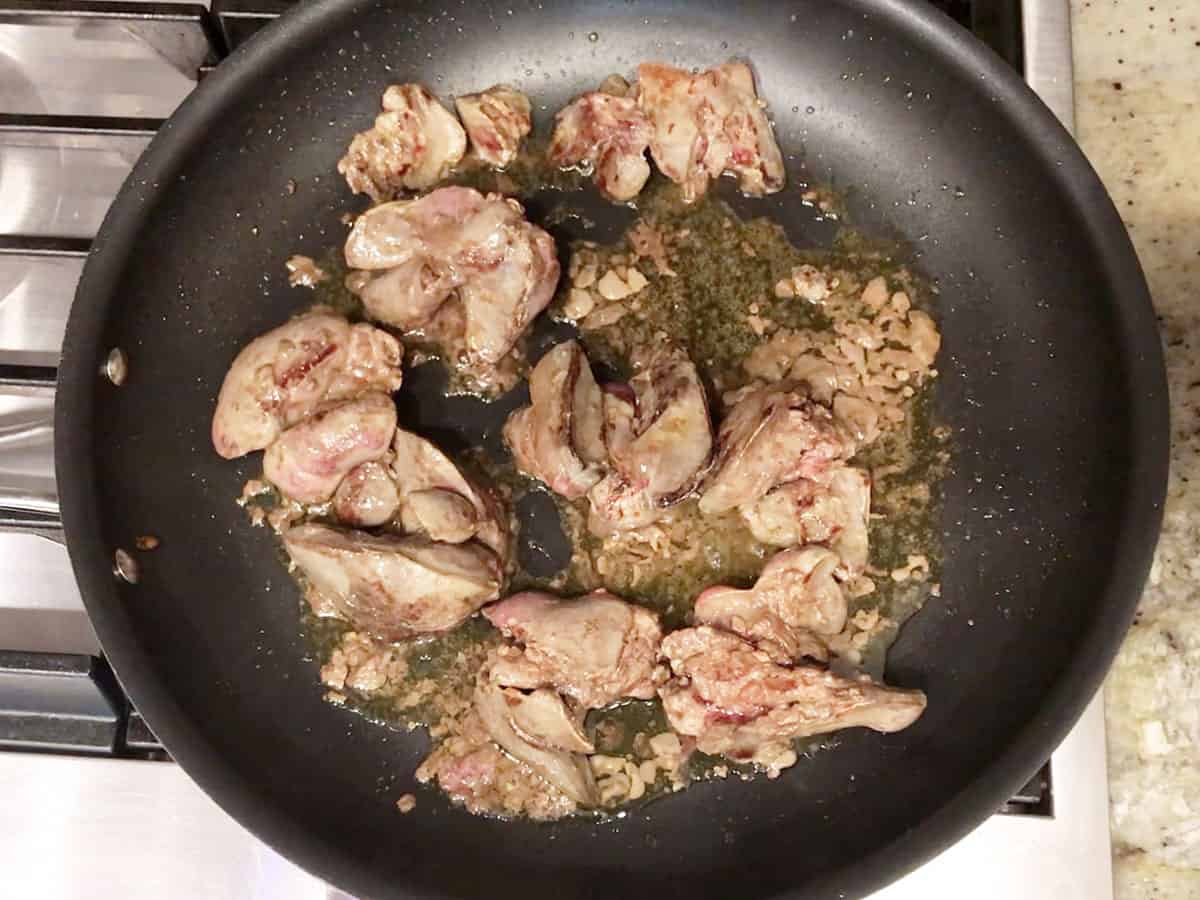
Transfer the skillet's contents, including the oil, to the food processor. Add the salt and pepper and process just until smooth.
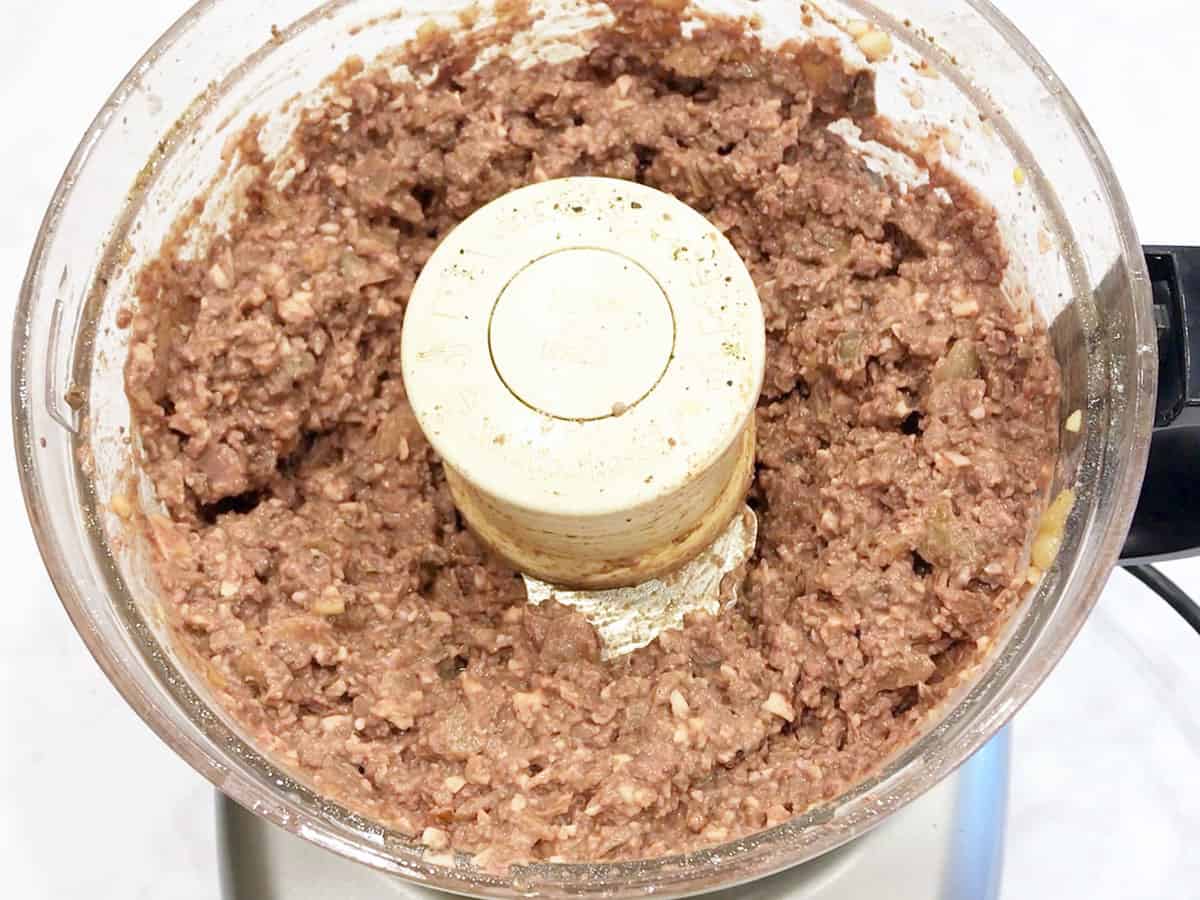
Refrigerate the spread for at least two hours before serving.
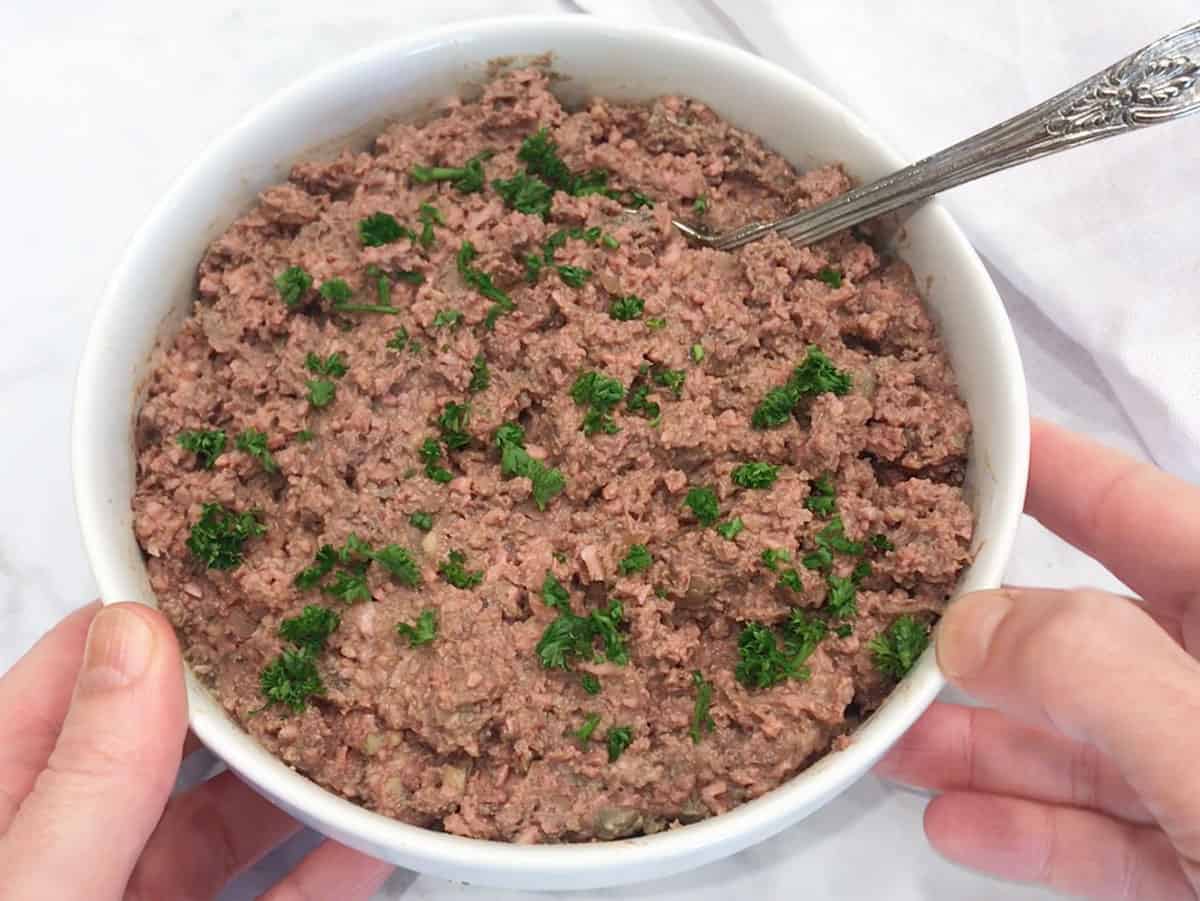
I love chopped chicken liver and this recipe is way easy and delicious. I added a little more hand chopped hardboiled egg and a little red onion after it all came out of the processor. Really nice!!
Patrick
Read more comments
Recipe Tips
- Don't overcook the chicken livers. Overcooked livers are dry and mealy. Perfectly cooked ones are tender and flavorful, even slightly sweet. However, the CDC says we should cook chicken livers to an internal temperature of 165°F.
- Don't eat this spread when it's still warm! It won't be very good. It needs time to develop its deep flavor. Its flavor and texture dramatically improve after a rest in the fridge.
- The spread's texture should be fairly rough. See the photo below? I ordered chopped liver and an egg salad at a Jewish deli, and this is what I was served. The liver was very smooth - too smooth. It should be more textured, as shown in the photos on this page.
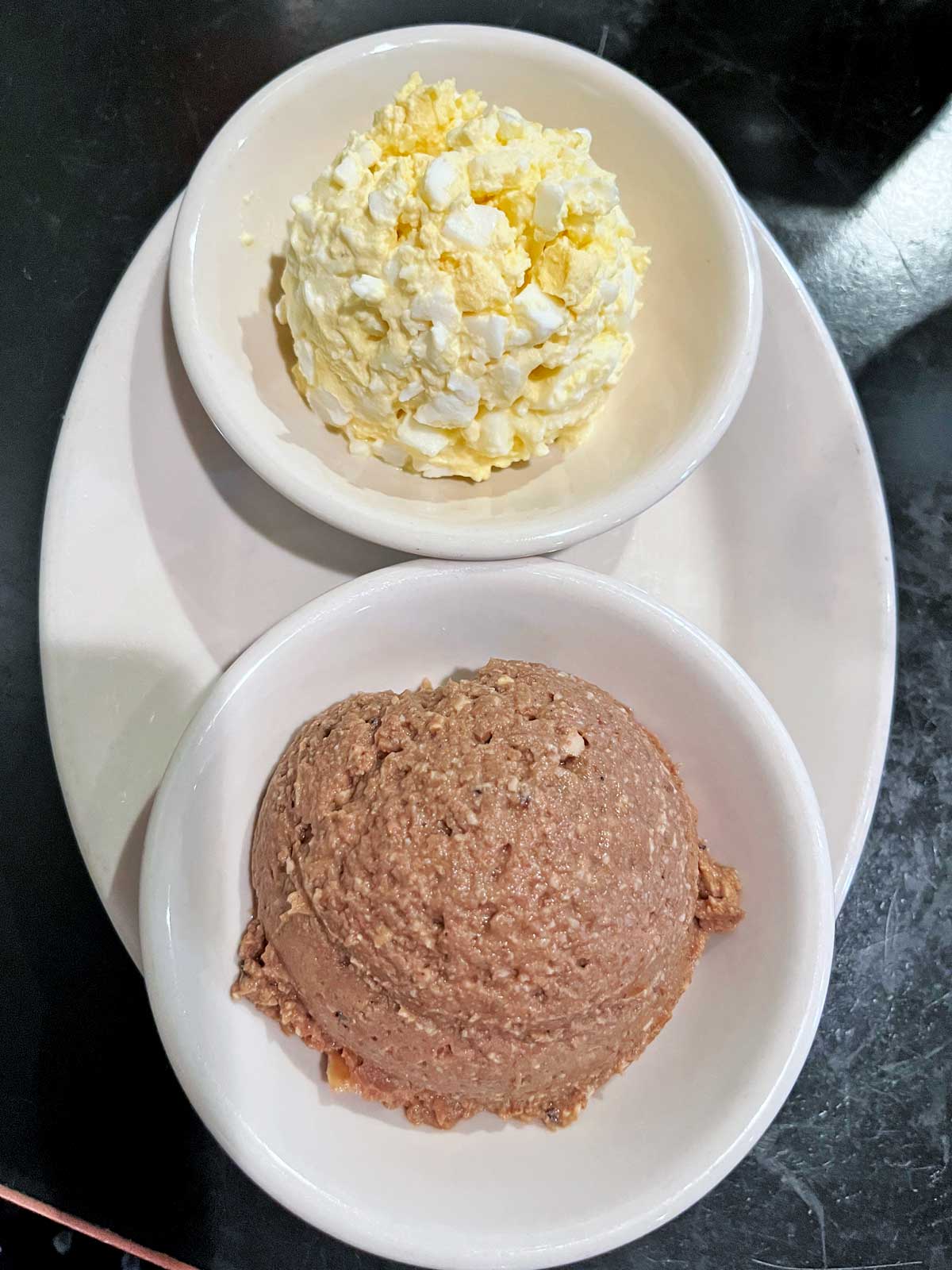
Recipe FAQs
It has a rich, deep flavor and smooth texture. It's very similar to pâté. It gets a lot of its flavor from caramelized onions and from the fact that it's high in fat.
They're similar, but the former is made with lots of onions, hard-boiled eggs, and chicken fat, while the latter is made with a small amount of onions or shallots, butter, cream, and a bit of alcohol such as brandy. Pâté is more refined in terms of flavor and texture, but both are delicious!
They're very different. Chicken liver is considerably milder in its flavor than beef liver, which is strongly flavored (even calf's liver, which is milder). Chicken liver also has a softer texture. If one wants to try liver for the first time and is hesitant, chicken is the way to go. Beef liver is not for beginners. 🙂
Chopped liver tastes best after it's had a chance to rest in the fridge, covered, for a few hours, allowing the flavors to meld. But it doesn't keep long in the fridge. Plan to make it a few hours ahead on the day you serve it and finish it within a day or two. Store it in the fridge in an airtight container.
You can also freeze it, although it will lose some of its creaminess. After defrosting, add a little more olive oil (1-2 tablespoons) and mix it well to make the spread fluffier.
Serving Suggestions
This tasty spread is lovely on toast (or Matzoh for Passover). For the low-carb crowd, it's excellent on a toasted keto English muffin, thick slices of almond flour bread, or almond flour crackers. I often serve it with fresh-cut vegetables, as shown in the photo below:
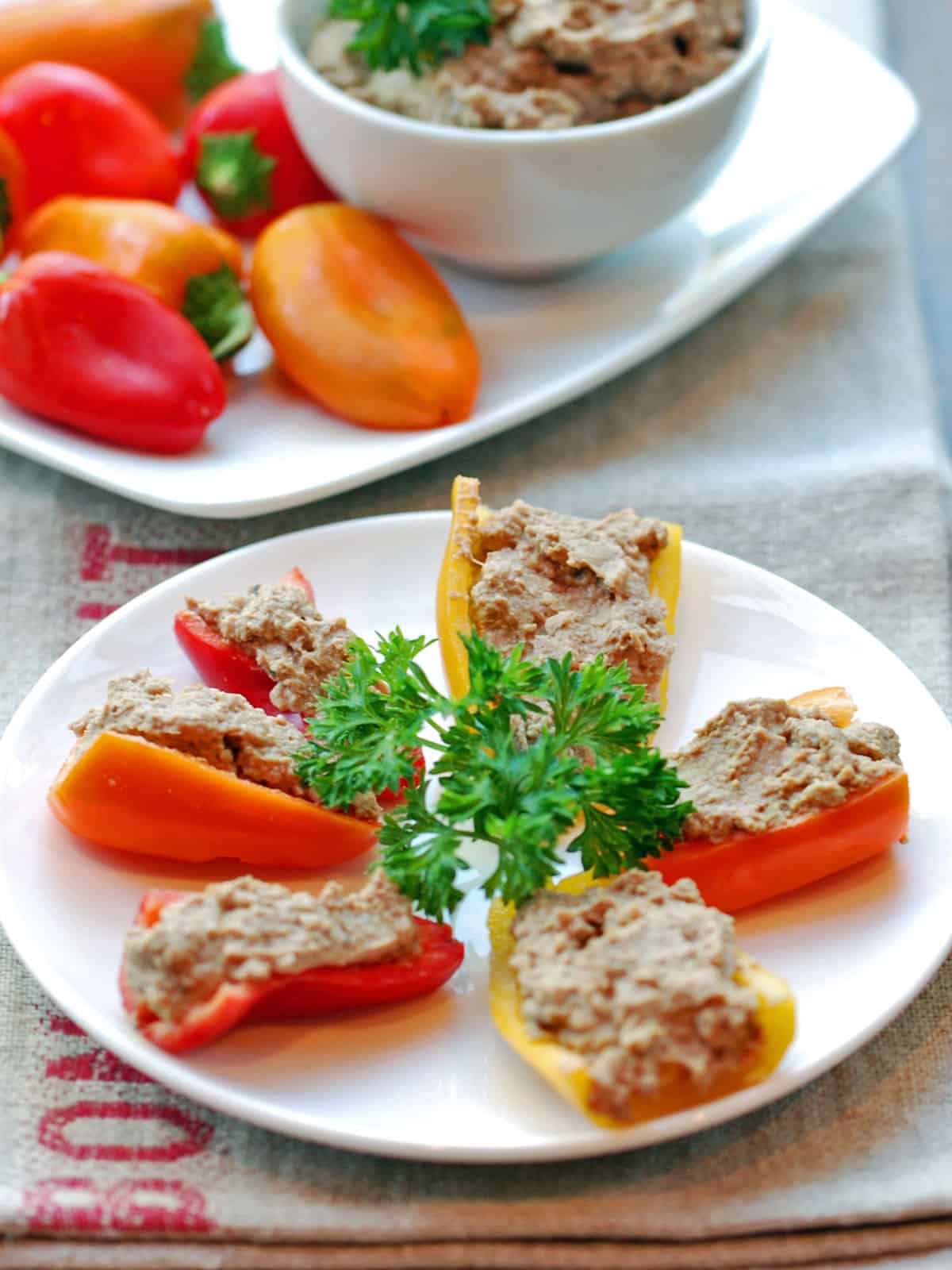
This dish is traditionally served as an appetizer on Jewish holidays. My grandma used to make it for Rosh HaShanah and Passover. But I make it whenever I'm in the mood and serve it as our main course, alongside quick pickles or cucumber vinegar salad, stuffed olives, and crudites.
Recipe Card
Grandma's Chopped Liver
Video
Ingredients
- 1 pound chicken livers
- 3 large hard-boiled eggs - halved
- 4 tablespoons olive oil - extra-virgin, divided; or chicken fat
- 1 large onion - finely chopped; 8 ounces
- 1 tablespoon fresh garlic - minced
- 1 teaspoon Diamond Crystal kosher salt - or ½ teaspoon of any other salt, including Morton kosher salt
- ¼ teaspoon black pepper
Instructions
- Place the chicken livers on paper towels to drain. Place the eggs in your food processor bowl.1 pound chicken livers, 3 large hard-boiled eggs
- Heat 2 tablespoons of the olive oil over medium-high heat in a large 12-inch skillet. Add the chopped onion and fry until golden, stirring occasionally, for about 5 minutes.4 tablespoons olive oil, 1 large onion
- Add the garlic and cook for a few more seconds, just until no longer raw.1 tablespoon fresh garlic
- Using a spatula, transfer the skillet contents, including any remaining oil, to the food processor.
- Add 2 more tablespoons of oil to the skillet. Add the chicken livers and cook them over medium heat (not higher, or they could burst) until brown on the outside and barely pink on the inside, about 3 minutes per side. Overcooked livers are dry and grainy (see notes below).
- Use the spatula to transfer the skillet contents, including the livers, the oil, and any tasty bits left on the bottom of the skillet, to the food processor.
- Add the salt and pepper. Process briefly, about 30 seconds, stopping once to scrape the sides and bottom with a spatula. You don't want the mixture to be as smooth as a liver pate. It should have a bit more texture.1 teaspoon Diamond Crystal kosher salt, ¼ teaspoon black pepper
- Transfer the mixture to a serving dish. Cover and refrigerate it for at least two hours, allowing the flavors to meld. Don't eat it while it's still warm! It won't be very good. It needs time to develop its deep flavor. Its flavor and texture greatly improve after a rest in the fridge.
Notes
- Seasonings, especially salt, are guidelines. Adjust to taste.
- This is my grandmother's recipe. The only change I make is using olive oil instead of chicken fat, but please feel free to use chicken fat if you wish. If you can't find chicken fat, it might be easier to buy duck fat.
- You can trim the white connective tissue and fat from the livers. Although I do this when making sautéed chicken livers, I don't bother doing it when making this recipe. I find that processing the livers in the food processor takes care of any difficult-to-chew bits.
- The CDC says we should cook chicken livers to an internal temperature of 165°F.
- This spread should not be eaten warm. It tastes best after it's had a chance to rest in the fridge, covered, for a few hours, allowing the flavors to meld. But it doesn't keep long in the fridge. Plan to make it the day you serve it, a few hours ahead, and finish it within a day or two. Store it in the fridge in an airtight container.
- You can also freeze it, although it will lose some of its creaminess. After defrosting, add a little more olive oil (1-2 tablespoons) and mix it well to make the spread fluffier.
Nutrition per Serving
Save this Recipe!
We will also add you to our weekly newsletter. Unsubscribe anytime. See healthyrecipesblogs.com/privacy/ to learn how we use your email.
Disclaimers
Most recipes are low-carb and gluten-free, but some are not. Recommended products are not guaranteed to be gluten-free. Nutrition info is approximate - please verify it. The carb count excludes non-nutritive sweeteners. Please read these Terms of Use before using any of my recipes.

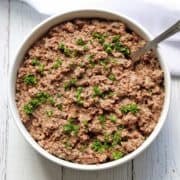
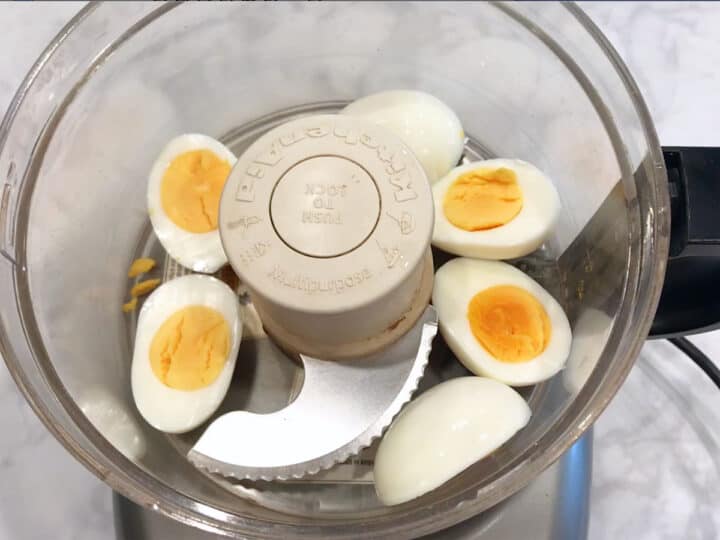
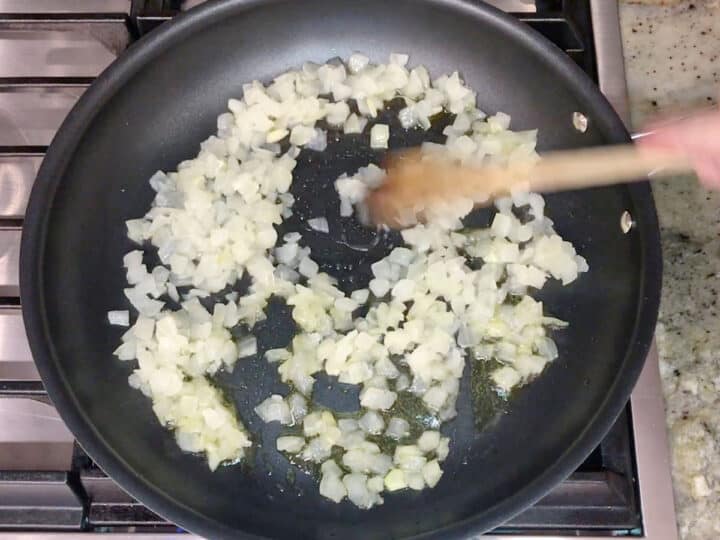
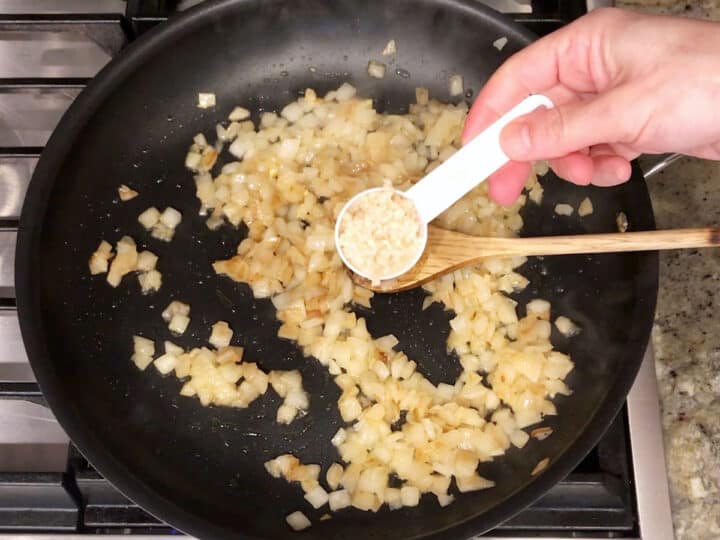
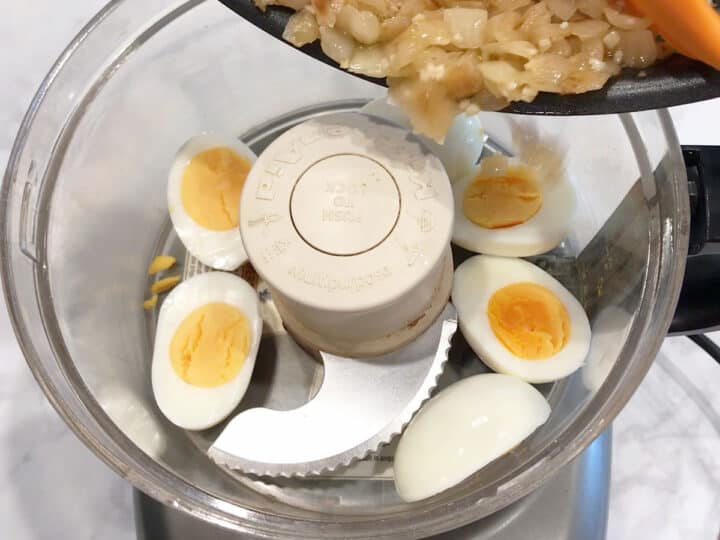
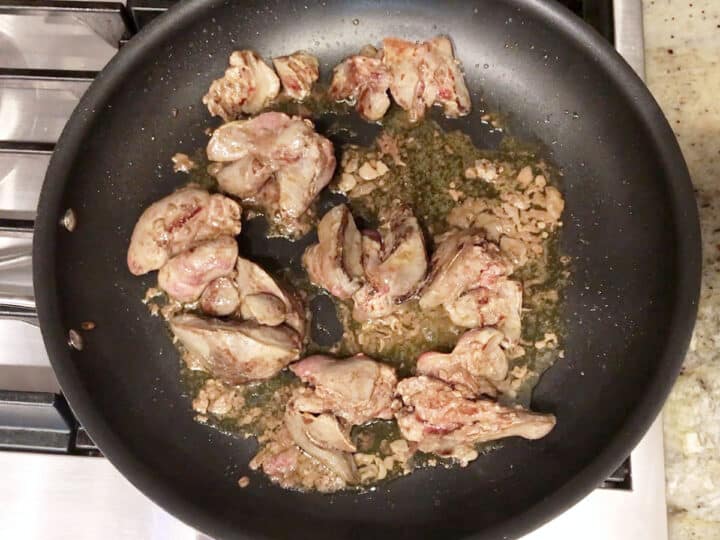
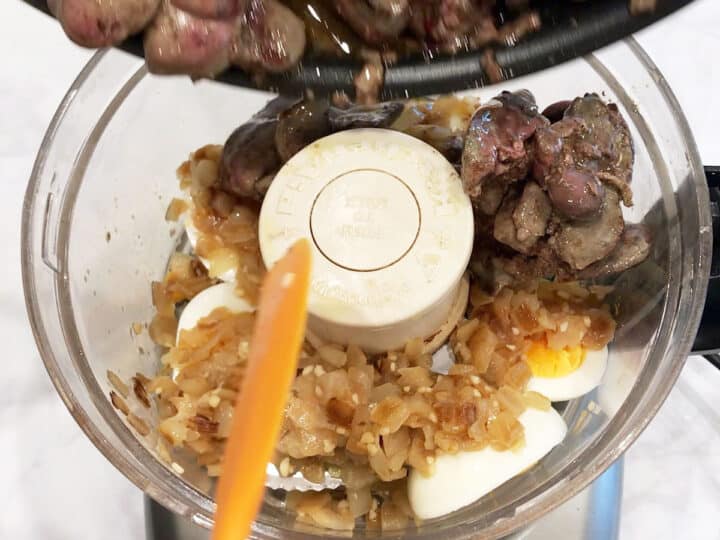
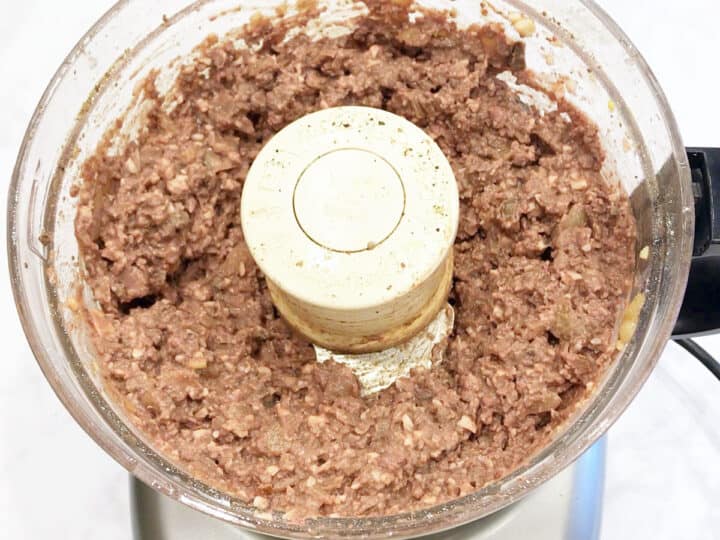
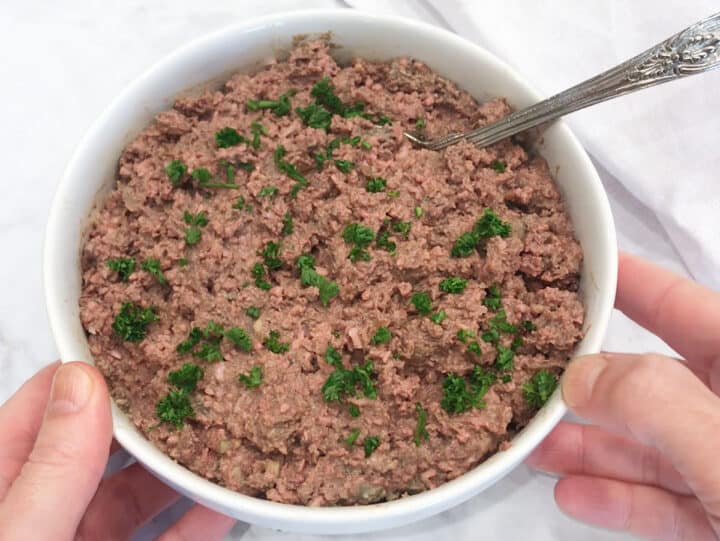
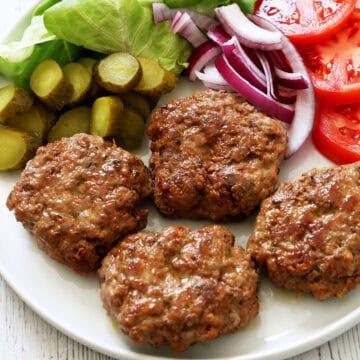
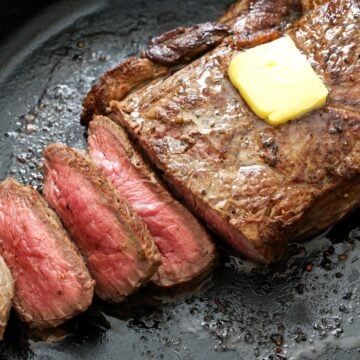

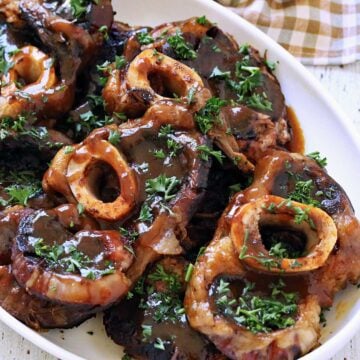
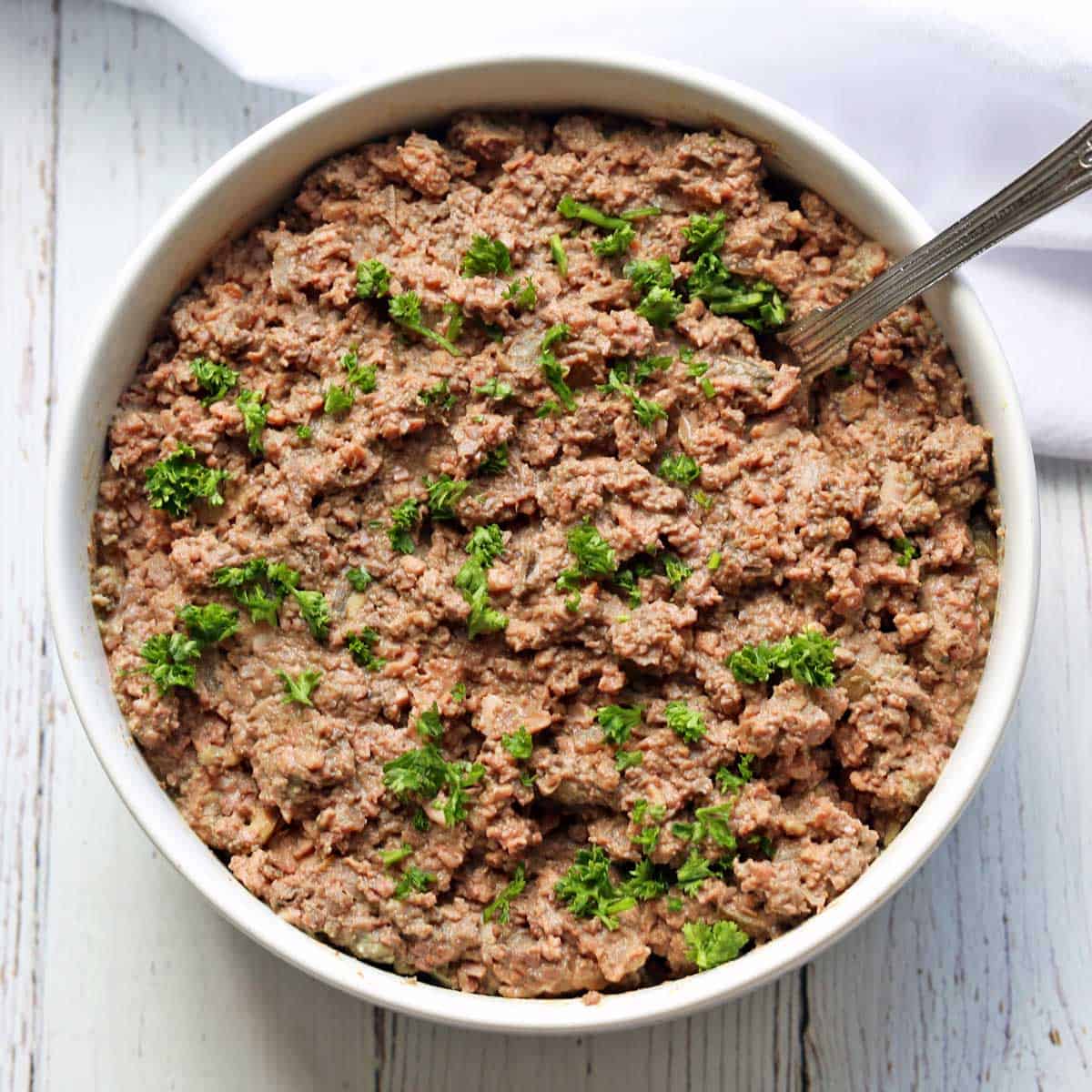
JT says
Thanks so much for this recipe! I just made it for tonight’s Hanukkah party. I’ve made it 8 hours in advance though. Will it still be ideal in time for serving?
Vered DeLeeuw says
Yes! Eight hours is fine. Just make sure it's well-covered and chilled, and bring it out 20 minutes before serving so it's not fridge-cold.
Happy Hanukkah!
Patrick says
I love chopped chicken liver and this recipe is way easy and delicious. I added a little more hand chopped hardboiled egg and a little red onion after it all came out of the processor. Really nice!!
Vered DeLeeuw says
I'm so glad you enjoyed this recipe, Patrick! Thank you very much for the review and for sharing your delicious tweaks.
Carol Shaich says
Very good recipe
Jill says
I love chopped liver, and this is a great simple recipe. Just one quibble, you say it does not taste good when just made; the first thing I do when it comes out of the processor is a big serve on good bread. Chag Sameach Pesach.
Vered DeLeeuw says
A big serve on good bread sounds amazing, Jill! Chag Sameach. 🙂
Carol says
Ready to prepare! Ty for the recipe in print. Sharing this, also my grandmother’s exact one …to my daughter in law for our first Seder. We have been always looking forward to the fried onions and the warm chopped liver. No one lets it rest at our home!
Vered DeLeeuw says
I hope you'll enjoy it, Carol! Happy Passover.
Darling says
Just what I had been hoping for. Wonderful!!!
Vered DeLeeuw says
I'm so glad you enjoyed this recipe! Thank you for the review.
Rochelle says
Thank you great help. By the way, I chopped the livers by hand
Vered DeLeeuw says
You're very welcome, Rochelle! I'm glad you enjoyed this recipe. Interesting that you chopped it by hand.
Sharon says
This came out great. My food processor was a bit too efficient, so it was smoother than I want. I suggest using the pulse setting for a bit more control.
Vered DeLeeuw says
Thanks for the feedback, Sharon! I'm glad you enjoyed this recipe.